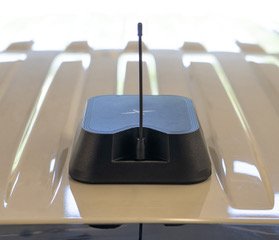KYOCERA AVX has launched a fresh line of integrated thin film hybrid couplers, aiming to support the ongoing advances in high-frequency wireless technology. This new series targets a broad range of sectors—from industrial and automotive to telecommunications and telemetry. It’s an interesting development because, as wireless systems evolve, devices like these couplers become quite essential to managing signal performance properly.
What makes hybrid couplers somewhat unique is their design as four-port directional couplers. They split incoming signals into two output signals of equal amplitude but shifted in phase by 90 degrees. Some couplers even allow for monitoring signal performance or injecting signals without disrupting the original input. It’s a bit like having an elegant control mechanism right in the hardware, which can be surprisingly handy when balancing complex wireless setups.
Features That Stand Out
The new DB0402 3dB 90° hybrid couplers from KYOCERA AVX use multilayer thin-film tech that has been tested and proven in real-world applications. These couplers cover microwave and RF frequencies from 3,000 up to 4,100 MHz—quite a useful range for many current wireless needs.
ALso read: Nigeria’s 5G Reality: Beyond the Hype, Into the Practical
One point I find quite practical is their tiny size. Measuring just 0.040″ by 0.023″ by 0.014″ (with a small tolerance of ±0.002″), they save valuable board space. That’s especially important because space is often at a premium in modern electronics. Plus, their nickel terminations are lead-free and support various soldering methods like reflow and vapor phase, which means they fit well within automated assembly lines. So, you get the benefit of easy manufacturing alongside advanced technology.
In terms of performance, these couplers handle continuous power up to 1 watt, which is pretty decent. They also show low insertion loss, typically around -0.5 dB, and impressive isolation. The amplitude and phase balance are quite tight too—about 0.6 dB typical for amplitude and a 2-degree phase difference on average. The company mentions temperature stability, linearity improvements, and low parasitic effects, which all help maintain signal quality in tough environments. Plus, they’re consistent from unit to unit and batch to batch—something that can make engineers breathe easier.
Where Will These Couplers Make a Difference?
The DB0402 series comes in four specific frequency bands—3,200, 3,500, 3,700, and 3,800 MHz—with a standard 50-ohm impedance. They operate reliably across a challenging temperature range, from -40°C to +85°C, which covers most real-world conditions you’d expect them to face, especially in automotive or industrial uses. Their compliance with International Automotive Task Force (IATF) standards and RoHS rules confirms that they meet rigorous quality and environmental guidelines.
Thinking about applications, these couplers could be found in all sorts of systems. Consider base stations, wireless LANs, and mobile communication setups spanning from established 4G networks to the emerging 5G and even 6G infrastructures. They’re also poised to play roles in satellite TV receivers, GPS devices, RF balanced amplifiers, and signal distribution equipment. I suppose the variety here reflects how central RF technology continues to be in everyday life, even if we don’t always notice it directly.
One can’t help but wonder if the rapid evolution in wireless tech pushes companies like KYOCERA AVX to keep refining such components constantly. After all, small improvements in couplers might translate into better overall system efficiency and signal integrity, something that users may only appreciate when things don’t go wrong.
Also read: ETSI Launches Industry Group to Tackle 6G Multiple Access Techniques
Final Thoughts
What I find slightly amusing is how these tiny components, just fractions of an inch in size, carry such an important role behind the scenes. They’re like unsung heroes in wireless systems, quietly ensuring signals split and phase-shift properly without causing headaches down the line. The fact that KYOCERA AVX supports automated production alongside solid performance specs means these couplers could smoothly enter many advanced devices without much fuss.
At the same time, the array of features and strict quality control suggests this isn’t just a one-size-fits-all kind of product. It’s clear they’re targeting high-demand applications that need reliable, compact, and efficient RF splitting capabilities.
In the end, for anyone working in wireless system design or RF engineering, these new hybrid couplers from KYOCERA AVX sound worth checking out. It’s not always obvious how much difference a well-designed coupler can make until you’re deep into system optimization and signal integrity issues.














Leave a comment